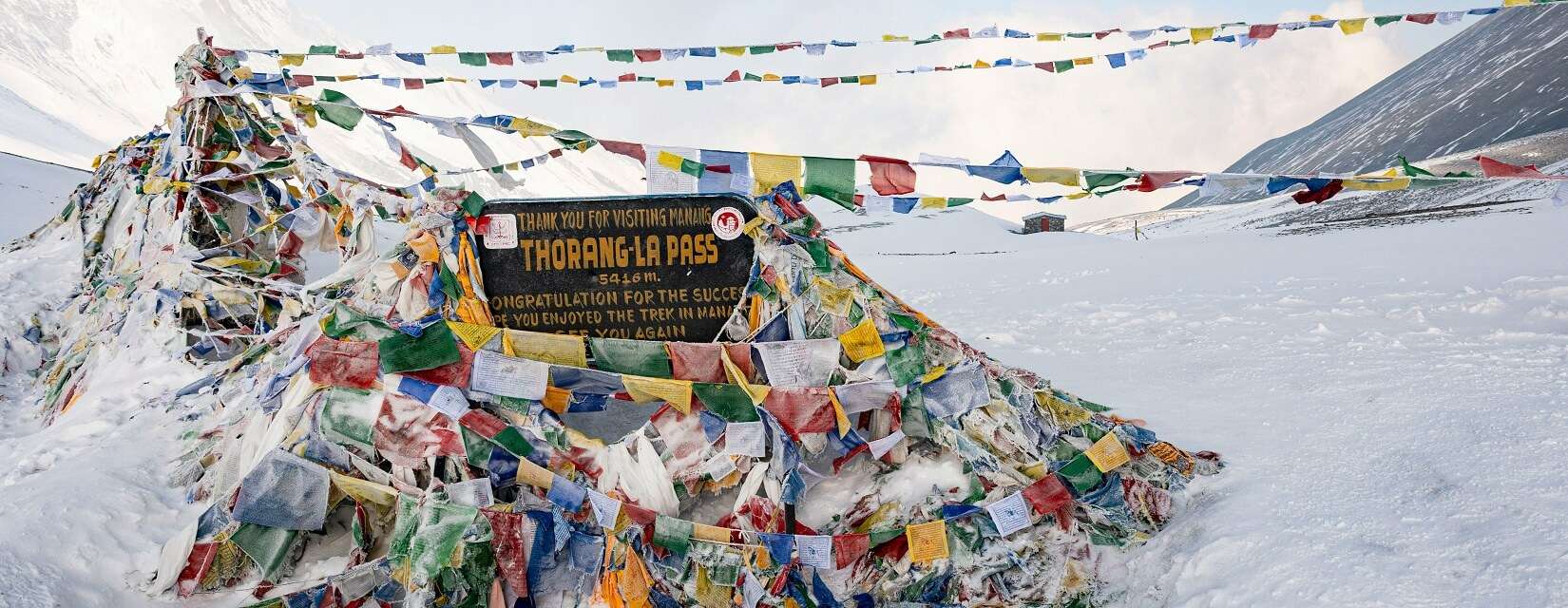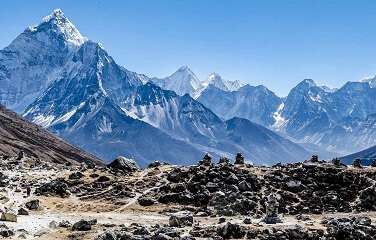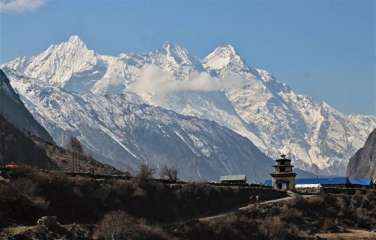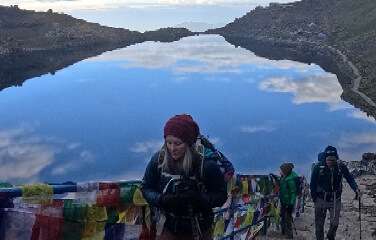Physical Preparation

Cardiovascular Training:
- Engage in regular cardiovascular exercises such as running, cycling, and swimming to build your endurance.
- Include interval training and long hikes with a weighted backpack to simulate trekking conditions.
Strength Training:
- Focus on leg strength with exercises like squats, lunges, and step-ups.
- Strengthen your core and upper body to help with balance and carrying your backpack.
Flexibility and Balance:
- Incorporate yoga and stretching exercises to improve flexibility.
- Practice balance exercises to help with stability on uneven terrain.
Acclimatization Hikes:
- If possible, go on shorter hikes at higher altitudes before your main trek to help your body adjust to lower oxygen levels.
Health and Safety
Medical Check-Up:
- Get a thorough medical check-up to ensure you are fit for high-altitude trekking.
- Discuss any pre-existing conditions with your doctor and get advice on necessary medications.
Vaccinations:
- Ensure you have all necessary vaccinations for Nepal, such as hepatitis A and B, typhoid, and tetanus.
Altitude Sickness Prevention:
- Learn about the symptoms of altitude sickness (AMS, HACE, HAPE) and how to prevent it.
- Consider medications like acetazolamide (Diamox) to help with acclimatization, after consulting with your doctor.
First Aid Training:
- Take a basic first aid course to handle common injuries and illnesses while trekking.
Gear and Equipment

Proper Footwear:
- Invest in a good pair of broken-in trekking boots that provide ankle support and are waterproof.
- Bring extra pairs of moisture-wicking socks.
Clothing:
- Dress in layers to adjust to varying temperatures. Include base layers, insulating layers, and waterproof outer layers.
- Bring a warm hat, gloves, and thermal underwear for colder conditions.
Backpack and Packing:
- Choose a comfortable, well-fitting backpack with a good support system.
- Pack essentials like a headlamp, trekking poles, water bottles, a hydration system, and a multi-tool.
Sleeping Gear:
- Bring a high-quality sleeping bag rated for cold temperatures.
- Consider a sleeping pad for added comfort and insulation.
Logistics and Planning

Permits and Documentation:
- Ensure you have the necessary permits, such as the TIMS (Trekkers' Information Management System) card and area-specific permits.
- Keep copies of important documents like your passport, travel insurance, and emergency contacts.
Guides and Porters:
- Hire a reputable guide and porter if needed. They can enhance your trekking experience and provide support.
- Respect their work and ensure they are treated fairly and ethically.
Itinerary and Acclimatization:
- Plan a trek itinerary that allows for gradual acclimatization. Follow the rule of ascending slowly and taking rest days.
- Be flexible and prepared to alter plans based on weather and health conditions.
Nutrition and Hydration:
Eat a balanced diet with plenty of carbohydrates and proteins to maintain energy levels.
- Stay well-hydrated, drinking at least 3-4 liters of water per day.
- Avoid alcohol and caffeine as they can contribute to dehydration.
Mental Preparation

Mental Toughness:
- Prepare for the mental challenges of high-altitude trekking, including isolation, physical discomfort, and changing weather conditions.
- Practice mindfulness, meditation, or other techniques to stay focused and positive.
Research and Expectation Management:
- Learn about the cultural aspects of the region you are trekking in to respect local customs and traditions.
- Set realistic expectations about the trekking conditions and your physical limits.
By thoroughly preparing in these areas, you can enhance your readiness for the high-altitude trek in Nepal, making the experience safer and more enjoyable.Typ
Types of High Altitude Sickness
Acute Mountain Sickness (AMS):
- Symptoms: Headache, nausea, dizziness, fatigue, shortness of breath, loss of appetite, and difficulty sleeping.
- Onset: Typically occurs at altitudes above 2,500 meters (8,200 feet).
High-Altitude Cerebral Edema (HACE):
- Symptoms: Severe headache, loss of coordination (ataxia), confusion, hallucinations, and coma.
- Onset: Can develop from AMS if ascent continues without proper acclimatization.
High-Altitude Pulmonary Edema (HAPE):
- Symptoms: Shortness of breath at rest, chest tightness, persistent cough (often with pink, frothy sputum), and cyanosis (blue tinge to the skin).
- Onset: Usually occurs after rapid ascent to high altitudes and can be fatal if untreated.
Causes and Risk Factors

- Reduced Oxygen Levels: At high altitudes, the air contains less oxygen, making it harder for the body to obtain the necessary amount.
- Rapid Ascent: Climbing too quickly without allowing time for acclimatization increases the risk.
- Individual Susceptibility: Some people are more prone to altitude sickness regardless of fitness or experience.
Prevention
Gradual Ascent:
- Ascend slowly to allow your body to acclimatize. Follow the rule of not increasing your sleeping altitude by more than 300-500 meters (1,000-1,500 feet) per day above 3,000 meters (10,000 feet).
- Include rest days every 3-4 days to aid acclimatization.
Hydration:
- Drink plenty of fluids to stay hydrated, but avoid alcohol and caffeine as they can cause dehydration.
Diet:
- Eat a high-carbohydrate diet to provide energy and aid acclimatization.
Medication:
- Consider taking acetazolamide (Diamox) to prevent AMS, starting one or two days before ascent, after consulting with a healthcare provider.
Avoid Overexertion:
- Don’t overexert yourself, especially during the first few days at high altitude.
Symptoms Monitoring and Response
- AMS: If mild symptoms occur, rest and acclimate at the current altitude until symptoms improve. Avoid further ascent if symptoms persist.
- HACE and HAPE: Immediate descent is crucial. Seek emergency medical treatment as these conditions can be fatal.
Treatment
For AMS:
- Rest: Rest at the same altitude until symptoms subside.
- Medication: Pain relievers for headaches (ibuprofen or paracetamol) and anti-nausea medication if needed.
- Oxygen: Supplemental oxygen can help alleviate symptoms.
For HACE:
- Immediate Descent: Descend at least 500-1,000 meters (1,600-3,300 feet) immediately.
- Dexamethasone: A steroid medication can reduce brain swelling (administer under medical supervision).
- Oxygen: Supplemental oxygen is critical.
For HAPE:
- Immediate Descent: Descend at least 500-1,000 meters (1,600-3,300 feet) immediately.
- Nifedipine: A medication that can help reduce pulmonary artery pressure (administer under medical supervision).
- Oxygen: Supplemental oxygen is critical.
- Hyperbaric Chamber: Portable hyperbaric chambers (Gamow bags) can simulate lower altitudes.
Emergency Protocols
- Evacuation: Be prepared for emergency evacuation procedures. Helicopter rescue may be necessary in severe cases.
- Communication: Carry communication devices (satellite phone, radio) to contact rescue services.
Acclimatization Tips
- Climb High, Sleep Low: During acclimatization hikes, climb to a higher altitude during the day but return to a lower altitude to sleep.
- Monitor Health: Regularly check your pulse oximetry (oxygen saturation levels) to monitor acclimatization progress.
- Buddy System: Trek with a partner and monitor each other for symptoms of altitude sickness.
By understanding the risks and taking preventive measures, trekkers can reduce the likelihood of experiencing severe altitude sickness and enjoy a safer journey in the majestic Himalayas of Nepal.

Easy and Short Treks in Nepal
- Ghorepani Poon Hill Trek
- Gosaikunda Lake Trek
- Everest Panorama View Trek
- Mardi Himal Trek
- Annapurna Trek
Simply contact Govinda at 977-9840396708 via phone, WhatsApp, or email at [email protected].





